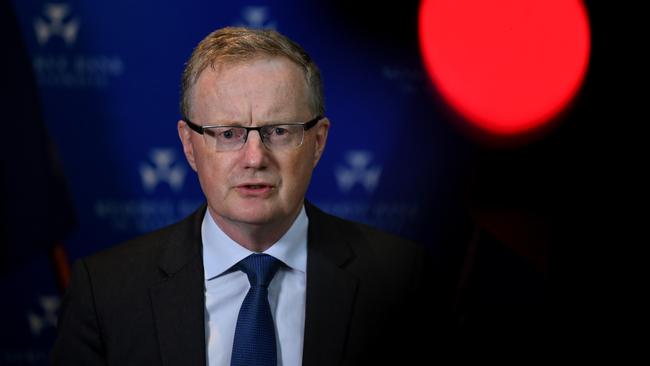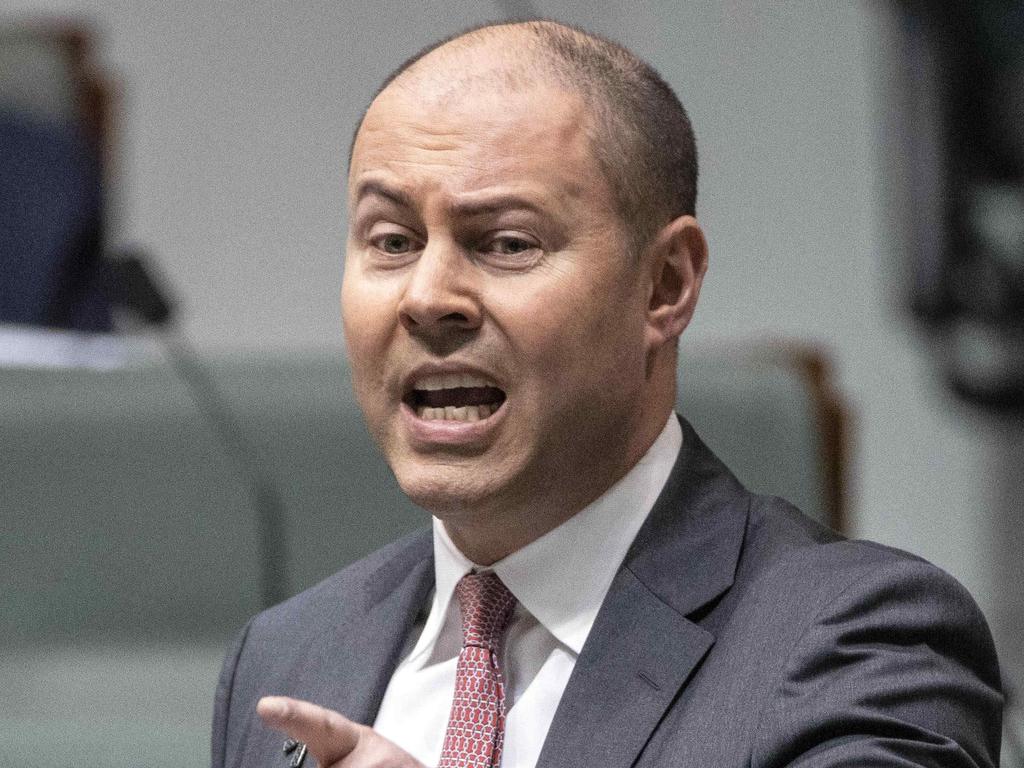RBA injects $100bn ahead of ‘shocker’ national accounts
The RBA more than doubled its lending lifeline to banks a day before the release of the June quarter national accounts.

The Reserve Bank will pump another $110bn of stimulus into the economy through support for cheap loans to business and households to compensate for the delays in the COVID-19 recovery timetable, as state border closures look likely to remain in place until Christmas.
Ahead of the release of the June quarter national accounts on Wednesday confirming Australian is officially in recession for the first time in three decades, the RBA more than doubled its lending lifeline to the nation’s banks to keep credit flowing.
As market economists predicted the national accounts would report a
6 per cent contraction in the economy, the worst in 75 years, the RBA foreshadowed an “uneven and bumpy” recovery.
Scott Morrison will ask the premiers to commit to making Australia “as normal as possible by Christmas”, but it will be up to state leaders to decide if they will adopt his government’s rules on who should be allowed to travel.
The Prime Minister spoke with Victorian Premier Daniel Andrews and NSW Premier Gladys Berejiklian to jump-start a plan to reopen Melbourne and relax the NSW-Victorian border.
Mr Morrison told question time on Tuesday he was still focused on developing a national approach to remove border restrictions by Christmas, after Mr Andrews revealed he would unveil a roadmap out of lockdown for Victoria on Sunday.
National cabinet had agreed on a roadmap to have all state borders opened by July but this was derailed by a second wave of coronavirus in Victoria. Mr Morrison told a meeting of Liberal and National MPs that he hoped he could get a similar commitment from premiers for a new recovery plan.
Josh Frydenberg told The Australian that the national accounts would show Australia had not been hit as hard as many other countries, but the pandemic had nevertheless swung a “wrecking ball” through the economy.
“The IMF is expecting 157 economies to contract this year with unprecedented falls in many, the Treasurer told The Australian.
“The impact in the June quarter has been staggering, with GDP falling by 20.4 per cent in the UK, 13.8 per cent in France, 11.5 per cent in Canada, 10.1 per cent in Germany and 9.1 per cent in the US,” he said.
“While the market is expecting falls less than what we have seen overseas, the national accounts will confirm what Australians already know — that the economy has been hit hard from COVID-19.
“That is why, as part of our economic plan, the Morrison government is providing more than $300bn in economic support to keep businesses in business and Australians in jobs.”
RBA governor Philip Lowe, in a statement released after the central bank’s monthly board meeting, announced that the cash rate would be unchanged at 0.25 per cent. But the Term Funding Facility, a discount line of credit available to lenders, would be extended to $200bn, up from the $90bn that it announced in March.
“This will help keep interest rates low for borrowers and support the provision of credit by providing banks greater confidence about continued access to low-cost funding,” Dr Lowe said.

So far, the banks and other approved lenders have borrowed $52bn under the facility, which was first announced in March as part of a dramatic loosening of monetary policy to insulate the economy against the economic fallout from the response to the coronavirus pandemic.
Goldman Sachs chief economist Andrew Boak called it a “a pragmatic decision to maintain current highly accommodative policy settings”.
Lenders will be able to borrow up to 5 per cent of their outstanding loans, up from 3 per cent originally, from the RBA to support lending in the economy. The RBA board also announced it would maintain the target of its quantitative easing program. “Over the past month, the bank bought a further $10bn of Australian government securities in support of its three-year yield target of 25 basis points,” Dr Lowe said.
“The board will not increase the cash rate target until progress is being made towards full employment and it is confident that inflation will be sustainably within the 2–3 per cent target band.”
The June quarter national accounts are expected to reveal two consecutive quarters of negative growth, the accepted definition of a recession. “They will be one for the history books,” said Commonwealth Bank economist Gareth Aird, who has pencilled in a 5.4 per cent quarterly decline, a little better than the 6 per cent expected on average by market economists.
The economy shrank 0.3 per cent in the first quarter of the year, dragged down by the start of various shutdown measures in late March and the impact of summer bushfires, and some fear the third quarter will show a decline too.
Dr Lowe sounded a note of cautious optimism in his statement on Tuesday, reiterating the downturn “was not as severe as expected and a recovery is now under way in most of Australia”.
“This recovery is, however, likely to be both uneven and bumpy, with the coronavirus outbreak in Victoria having a major effect on the Victorian economy,” he added.
Deloitte Access Economics partner Chris Richardson said the national accounts would be a “shocker” but would be better than most countries had suffered.
“It will give us terrible news and good news,” Mr Richardson said.
The terrible news is that it will be the worst downturn in the Australian economy in three quarters of a century. “And it arrived in the blink of an eye,’’ he said. “The good news is that it will be much better than we are seeing in most of the rest of the world. Only a handful have done better, on both the virus and the economy.
“It’s a shocker, but even at 6-7 per cent it still leaves us way ahead of the bulk of the pack.
It is cold comfort, there has been so much bad news for so long, but even with Victoria we are an outperformer on both the virus and the economy.”
Wesptac economists expect the economy to shrink 6 per cent in the quarter. “The risks around this forecast are immensely greater than is typically the case and we should expect surprises in the national accounts — very large surprises,” said chief economist Bill Evans.






